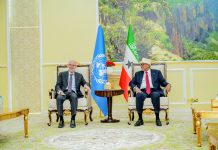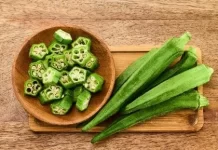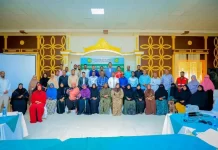Radio Ergo-
Jama Mohamud Hassan, a camel herder from Ethiopia’s Somali region, has been on the move for the past six months in search of pasture and water for his herd of 20 camels, trekking hundreds of kilometres with his weakening animals.
Two weeks ago, he finally found a little grazing and water in Gacan Libah mountain area, around 120 kilometres northeast of Hargeisa in Somaliland’s Marodijeh region.
He had walked from his home in Gashamo, approximately 45 kilometres south of the Somaliland border.
“I moved with my camels since the region is experiencing a dry season. I lost 10 calves on the way,” said Jama, who has been moving with his camels since September. His journeying is still not over as the drought-like conditions intensify.
“I am planning to move out with my camels to other areas. A number of pastoralists have come to Gacan Libah and the pasture is almost over,” he told Radio Ergo by phone.
Jama said his family, whom he has not seen for six months, are depending on food taken on credit from one of the shops in Abokar village in Gashamo, Ethiopia. His plan is to pay the bills once his feeble livestock become stronger with the rain. Right now, they would not sell for much at all in the market.
Another pastoralist Hamse Abdi Adan decided to migrate with his family of six from Sabawanag area, 45 km south of Hargeisa, to the coastal city of Berbera. He told Radio Ergo’s local reporter by phone that he made the move after using up all his savings buying water for his herd of 30 camels and 50 goats.
He had been walking for 11 nights and was yet to reach his destination when he talked with our reporter.
“I am moving with my livestock. We are searching for water and pasture,” said Hamse.
According to the Somaliland Disaster Preparedness and Food Security Agency, 55,000 households in Somaliland have been affected by water shortages caused by poor Deyr rains across the Hawd plateau, spanning the border area with Ethiopia, and Marodijeh, Sanag, Sool and Togdher regions. The most affected are livestock herders.
Feisal Ali Sheikh, the agency’s director, told Radio Ergo that the main problem facing people in these regions now is the lack of water and food.
“The last weather forecast showed that the region might have to wait till April before it receives rain. Some of the locals have food but no water for cooking,” the director said.
Ten water tankers owned by the agency have been transporting water to some of the worst hit areas for the past 30 days. They have also distributed food to some of the most vulnerable.
The agency said the whole of Togdher region has been badly affected by the water shortage with an estimated 37,000 people in need of water. Other areas where the water shortage has been experienced includes, Garadag, Ceel-Afweyne and Fiqifuliye in Sanaag region.































